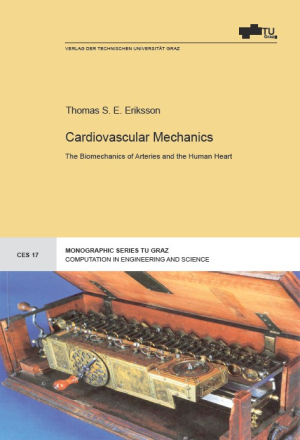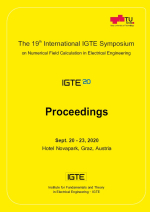Cardiovascular diseases (CVDs) are the leading cause of mortality today.
This work, therefore, aims at developing a framework for modeling CVDs,
and we present both a three-dimensional growth model of a human
saccular cerebral aneurysm and an electromechanically coupled model of
the heart.
We investigate the effect of anisotropy in vascular layers
upon the mechanical response in human saccular cerebral aneurysm during
growth and remodeling and we present the constituents needed for the
numerical implementation of a structurally-based constitutive law
describing the behavior of passive myocardium and the tensors needed for
implementing active contraction. A model framework of the left
ventricle (LV) is presented, where we use lumped parameter models to
simulate physiologically realistic LV pressure changes in response to
the contracting heart. The increase in fiber dispersion, often
associated with cardiac pathophysiology, is investigated using a novel
approach to model the dispersion of both the myocyte fiber and sheet
orientations and this formulation is extended to include a dispersed
active contraction. Theoretical considerations on the mathematical and
physical motivation for tension/compression fiber switching in
dispersion is also investigated.
The Biomechanics of Arteries and the Human Heart
Ausgabe: Open Access E-Book
ISBN: 978-3-85125-278-1
Sprache: Englisch
Erschienen: Juni 2013
Reihe: Monographic Series TU Graz / Computation in Engineering and Science, Band 17
Cardiovascular diseases (CVDs) are the leading cause of mortality today.
This work, therefore, aims at developing a framework for modeling CVDs,
and we present both a three-dimensional growth model of a human
saccular cerebral aneurysm and an electromechanically coupled model of
the heart.
We investigate the effect of anisotropy in vascular layers
upon the mechanical response in human saccular cerebral aneurysm during
growth and remodeling and we present the constituents needed for the
numerical implementation of a structurally-based constitutive law
describing the behavior of passive myocardium and the tensors needed for
implementing active contraction. A model framework of the left
ventricle (LV) is presented, where we use lumped parameter models to
simulate physiologically realistic LV pressure changes in response to
the contracting heart. The increase in fiber dispersion, often
associated with cardiac pathophysiology, is investigated using a novel
approach to model the dispersion of both the myocyte fiber and sheet
orientations and this formulation is extended to include a dispersed
active contraction. Theoretical considerations on the mathematical and
physical motivation for tension/compression fiber switching in
dispersion is also investigated.






